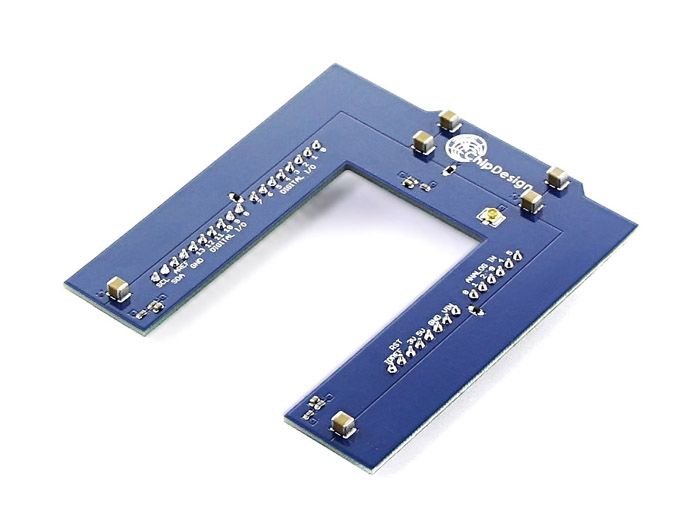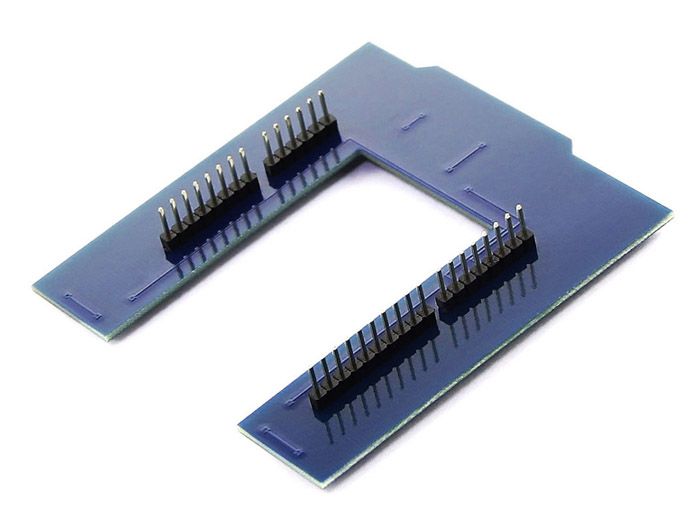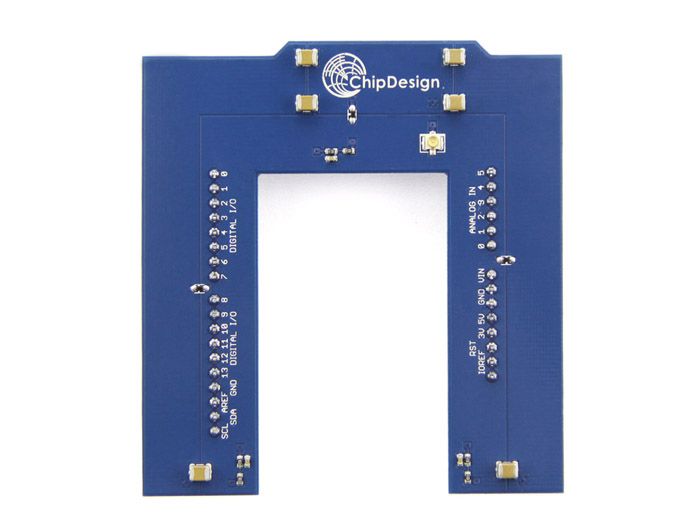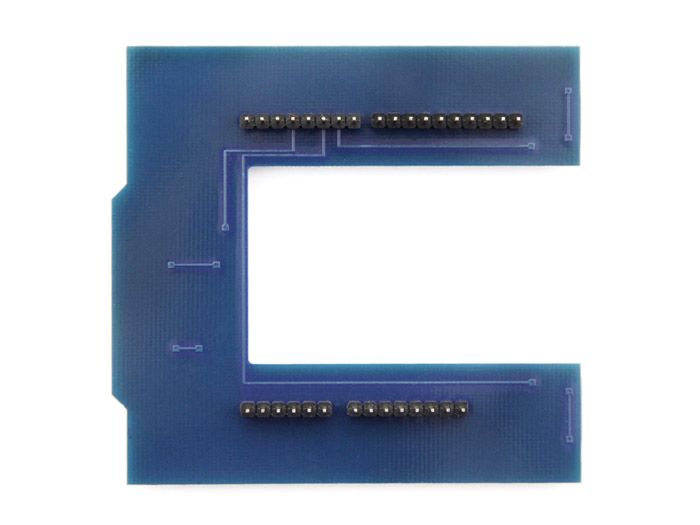Software defined radio antenna
- Product SKU: SS_113990078
- Category: Actuator, Antennas, Arduino, Grove Wireless, IoT, Raspberry Pi, Seeedstudio Grove, Wireless

- Order within
ChipDesigns tunable antenna for mobile devices consists of a low-profile electronically-tunable electrically-small (18.5 cm long) slot antenna, which allows for improved receiver selectivity1. The tunable antenna can be used in conjunction with software defined radios (SDRs) such as for example the Ettus/NI USRP, the FlexRadio, the FUNcube Dongle, the HackRF and the RTL-SDR.
Features:
Band coverage:
Well-matched (dB20(|S11|) < -10 dB, VSWR < 1.9) frequency bands are the 700 MHz, 866 MHz (ISM), 900 MHz, 1227 MHz (GPS L2), 1800 MHz, 1900 MHz, and 2100 MHz band. For the cellular bands, the full TX band, the duplex gap, and the full RX band are covered, allowing contiguous and non-contiguous intra-band CA with an instantaneous bandwidth up to 100 MHz, if applicable.
Poorly-matched (dB20(|S11|) < -6 dB, VSWR < 3) frequency bands are the 433 MHz (ISM) and 450 MHz band for the Seeed version.
The presence of the test hardware affects the return loss, as any efficient antenna is sensitive to its surrounding. Return loss measurements were done with the tunable antenna plugged into an Arduino Due and a Seeeduino Lotus micro-controller board, and the results can differ by as much as 100 MHz for the same bias settings. At the edges of the tunable frequency range - i.e. at 400 - 433 MHz and 2.45 - 2.6 GHz, differences in return loss can exist, which can not be compensated anymore by biasing the RF varactor diodes differently.
Directivity: The full-space radiating version is recommended for IoT devices and tablets, whereas half-space radiating version, currently under development, is recommended for smartphones in order to meet the SAR specification. A ¦Ë0/2 full-space radiator has a directivity of 1.6 dBi, whereas ¦Ë0/2 half-space radiator has a directivity of 10log10(¦Ð) ¡Ö 5 dBi.
Efficiency: TBD. The bandwidth and efficiency of electrically-small antennas with sufficient instantaneous bandwidth are bounded by the Chu-Harrington limit.
Programming: The frequency band can be programmed using three PWM outputs of Arduino micro-controller boards, such as the Arduino Due or the Seeeduino Lotus, or 5 V Arduino shield compatible mbed2 micro-controller boards, such as the u-blox C027.
Tunable elements: 3 RF varactor diodes integrated in the radiating aperture for improved antenna match tuning. The tuning time is limited by the RC constant of the low pass filter on the PWM outputs. The RF varactor diodes do generate spurious emission.
Specification:
Seeed version - Test hardware influencing the antenna match: Seeeduino Lotus micro-controller board and 10 cm U.FL to SMA adapter.
1. UWB antennas, such as the log-periodic and the Archimedean spiral antenna, are electrically-large and therefore do not allow for MIMO on the handset, and offer no selectivity.?
2. 3.3 V mbed micro-controller boards will require 3.3 V to 5 V level shifters to be inserted to bias the varactors up to 5 V and cover the entire tunable frequency range of the tunable antenna.?
If you have any technical problem, please contact info [at] chipdesign.be.
Technical details
Dimensions 110mm x120mm x8.7mm
Weight G.W 22g
Battery Exclude
ChipDesigns tunable antenna for mobile devices consists of a low-profile electronically-tunable electrically-small (18.5 cm long) slot antenna, which allows for improved receiver selectivity1. The tunable antenna can be used in conjunction with software defined radios (SDRs) such as for example the Ettus/NI USRP, the FlexRadio, the FUNcube Dongle, the HackRF and the RTL-SDR.
Features:
Band coverage:
Well-matched (dB20(|S11|) < -10 dB, VSWR < 1.9) frequency bands are the 700 MHz, 866 MHz (ISM), 900 MHz, 1227 MHz (GPS L2), 1800 MHz, 1900 MHz, and 2100 MHz band. For the cellular bands, the full TX band, the duplex gap, and the full RX band are covered, allowing contiguous and non-contiguous intra-band CA with an instantaneous bandwidth up to 100 MHz, if applicable.
Poorly-matched (dB20(|S11|) < -6 dB, VSWR < 3) frequency bands are the 433 MHz (ISM) and 450 MHz band for the Seeed version.
The presence of the test hardware affects the return loss, as any efficient antenna is sensitive to its surrounding. Return loss measurements were done with the tunable antenna plugged into an Arduino Due and a Seeeduino Lotus micro-controller board, and the results can differ by as much as 100 MHz for the same bias settings. At the edges of the tunable frequency range - i.e. at 400 - 433 MHz and 2.45 - 2.6 GHz, differences in return loss can exist, which can not be compensated anymore by biasing the RF varactor diodes differently.
Directivity: The full-space radiating version is recommended for IoT devices and tablets, whereas half-space radiating version, currently under development, is recommended for smartphones in order to meet the SAR specification. A ¦Ë0/2 full-space radiator has a directivity of 1.6 dBi, whereas ¦Ë0/2 half-space radiator has a directivity of 10log10(¦Ð) ¡Ö 5 dBi.
Efficiency: TBD. The bandwidth and efficiency of electrically-small antennas with sufficient instantaneous bandwidth are bounded by the Chu-Harrington limit.
Programming: The frequency band can be programmed using three PWM outputs of Arduino micro-controller boards, such as the Arduino Due or the Seeeduino Lotus, or 5 V Arduino shield compatible mbed2 micro-controller boards, such as the u-blox C027.
Tunable elements: 3 RF varactor diodes integrated in the radiating aperture for improved antenna match tuning. The tuning time is limited by the RC constant of the low pass filter on the PWM outputs. The RF varactor diodes do generate spurious emission.
Specification:
Seeed version - Test hardware influencing the antenna match: Seeeduino Lotus micro-controller board and 10 cm U.FL to SMA adapter.
1. UWB antennas, such as the log-periodic and the Archimedean spiral antenna, are electrically-large and therefore do not allow for MIMO on the handset, and offer no selectivity.?
2. 3.3 V mbed micro-controller boards will require 3.3 V to 5 V level shifters to be inserted to bias the varactors up to 5 V and cover the entire tunable frequency range of the tunable antenna.?
If you have any technical problem, please contact info [at] chipdesign.be.
Technical details
Dimensions 110mm x120mm x8.7mm
Weight G.W 22g
Battery Exclude
RETURNS POLICY
Lorem ipsum dolor sit amet, consectetur adipiscing elit. Morbi ut blandit risus. Donec mollis nec tellus et rutrum. Orci varius natoque penatibus et magnis dis parturient montes, nascetur ridiculus mus. Ut consequat quam a purus faucibus scelerisque. Mauris ac dui ante. Pellentesque congue porttitor tempus. Donec sodales dapibus urna sed dictum. Duis congue posuere libero, a aliquam est porta quis.
Donec ullamcorper magna enim, vitae fermentum turpis elementum quis. Interdum et malesuada fames ac ante ipsum primis in faucibus.
Curabitur vel sem mi. Proin in lobortis ipsum. Aliquam rutrum tempor ex ac rutrum. Maecenas nunc nulla, placerat at eleifend in, viverra etos sem. Nam sagittis lacus metus, dignissim blandit magna euismod eget. Suspendisse a nisl lacus. Phasellus eget augue tincidunt, sollicitudin lectus sed, convallis desto. Pellentesque vitae dui lacinia, venenatis erat sit amet, fringilla felis. Nullam maximus nisi nec mi facilisis.
SHIPPING
Lorem ipsum dolor sit amet, consectetur adipiscing elit. Morbi ut blandit risus. Donec mollis nec tellus et rutrum. Orci varius natoque penatibus et magnis dis parturient montes, nascetur ridiculus mus. Ut consequat quam a purus faucibus scelerisque. Mauris ac dui ante. Pellentesque congue porttitor tempus. Donec sodales dapibus urna sed dictum. Duis congue posuere libero, a aliquam est porta quis.
Donec ullamcorper magna enim, vitae fermentum turpis elementum quis. Interdum et malesuada fames ac ante ipsum primis in faucibus.
Curabitur vel sem mi. Proin in lobortis ipsum. Aliquam rutrum tempor ex ac rutrum. Maecenas nunc nulla, placerat at eleifend in, viverra etos sem. Nam sagittis lacus metus, dignissim blandit magna euismod eget. Suspendisse a nisl lacus. Phasellus eget augue tincidunt, sollicitudin lectus sed, convallis desto. Pellentesque vitae dui lacinia, venenatis erat sit amet, fringilla felis. Nullam maximus nisi nec mi facilisis.














































